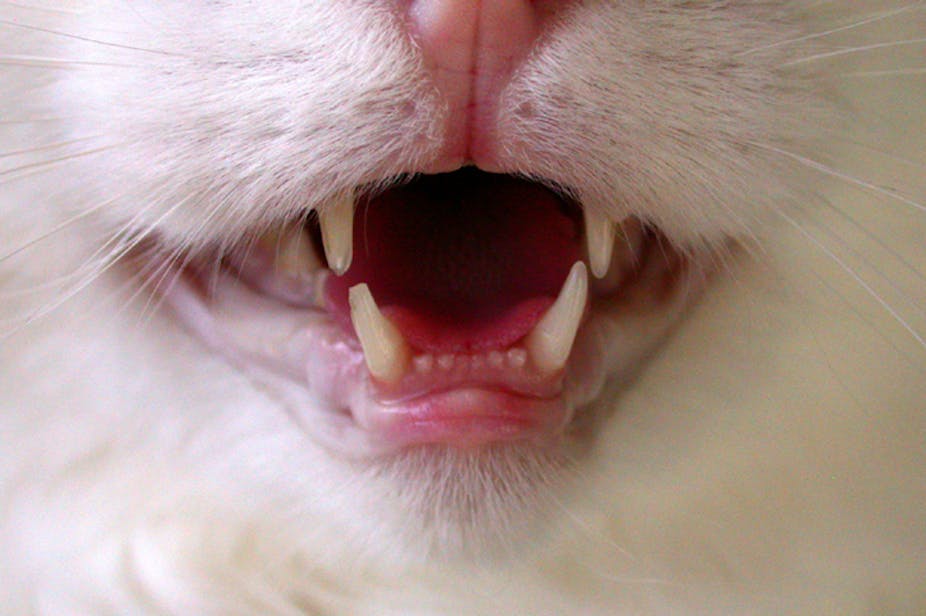The “good old days” of psychopharmacology involved only a few major suspects: alcohol, cannabis, opiates, uppers (amphetamines), downers (barbiturates) and the occasional serendipitous curiosity such as LSD.
Around the 1980s the chemistry became clever, with tweaked versions of existing drugs emerging from backyard chemists to overcome legal restrictions on the illicits. At the same time drug companies were modifying prescription psychotropics for profit.
The pharmacopea multiplied rapidly. MDMA (Ecstasy) and Prozac were both “designer drugs” of that era. Countless more have followed in their wake.
One of the most curious is mephedrone (or 4-methylmethcathinone), colloquially known as “Meow”, “4-MMC”, “M-Cat”, “bath salts” or “plant food”. Mephedrone has exploded in popularity in the UK, where it is now almost as popular as MDMA and cocaine.
Meow was legal in the UK until April of last year, users freely buying it over the internet or in head shops as “plant food”. Its high purity, cheap price, and cuddly, euphoric, “moreish” psychoactive effects undermined existing lucrative drug markets.
Why pay $200 a gram for cocaine of dubious purity when you can have 10 grams of pure Meow for the same price?
The legal situation in Australia is more ambiguous: you might be able to legally import Meow but it will be illegal to possess in most states and territories. You don’t want Meow in your pocket when a sniffer dog approaches.
The science bit
For the geeks, mephedrone is a “modified cathinone”. The cathinones (“Cats”) are close chemical cousins of the amphetamines.
The Top-Cat is cathinone itself, the main ingredient of the khat shrub that is chewed in East Africa for its sociable, stimulant properties.
Tweaking cathinone gives you methcathinone (a stimulant once marketed as an antidepressant in Russia and withdrawn when its addictive nature became evident). A further tweak produces “Meow”.
Highs
So what does it feel like? Erowid.com and Bluelight.ru user experiences evoke MDMA, methamphetamine and cocaine-like notes: MDMA-like with the loved-up empathy and enhanced tactile sensations; methamphetamine-like with the energising and chatty stimulation; and cocaine-like with its short acting high and moreish nature.
This addictive feature is perhaps the most alarming part of the mephedrone story. Supplies purchased with the intention of lasting for a month are consumed in a single weekend binge, during which sleep is as scarce as a rat in a khattery.
Lows
So far, the science of Meow is rudimentary and consists of surveys of Meow users and case reports from hospital emergency rooms. These tell us that people occasionally get hot, paranoid, panicky and develop racing hearts on the drug.
The drug has a foul taste and is painful and corrosive to snort: accordingly many users “bomb” the drug by wrapping it in a cigarette paper and swallowing. Death-by-Meow appears a rare outcome relative to the tsunami of recent use, although it has happened.
But there are worse things than death. Like walking around planet Earth for decades with a deeply fried Meow-brain. Consuming a large amount of any drug in a single session is generally a bad idea: 14 beers on one night followed by six days off is far worse for your brain than two beers a night for seven consecutive nights.
A small steady drip of poison over a long time gives the brain time to adapt.
So current reports of Meow-bingeing brings concern about the proverbial “trip into the unknown”, a trip that has epitomised the Ecstasy debate over the last two decades.
For all we know at present, Meow may be violently neurotoxic or may be as safe as milk. Such debates keep research psychopharmacologists in business.
After all, a drug is defined as something a scientist injects into a rat in order to obtain a research grant.
There are next to no published studies of Meow toxicity. Our own unpublished studies show that rats find Meow highly rewarding, and that it activates similar brain regions to MDMA and cocaine, lighting up areas rich in the neurotransmitters dopamine (related to energy and motivation), oxytocin (related to the huggy effects of drugs like MDMA) and serotonin (related to mood, sleep, and appetite).
There are no obvious signs of neurotoxicity and ill-health in our rats given Meow, although their memory might be somewhat ordinary relative to abstaining rats.
Like MDMA, it seems hazardous to take high doses of Meow in hot environments, with potentially lethal hyperthermia at 30˚C temperatures.
So the Meow-khat is long out the bag, and a mass uncontrolled experiment is underway among millions of young party drug enthusiasts, as well as more controlled experiments with a few dozen Meow-rats.
Even if the Meow-rats turn out to have holes in their brains (which seems unlikely) it’s a safe bet young people will party on regardless.
And as Meow illegality slowly creeps across the principalities of the world, the clandestine chemical astronauts of the psyche will have their next designer mutations ready for market.
Which drug would you like to see profiled? Contact the science editor.

